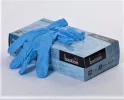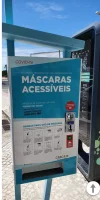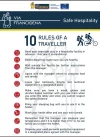I don't agree with this, and the reasons are simple.
To deal with the second statement, that this is preparing for the unforeseen. The circumstance where there is no albergue accommodation are entirely foreseeable, and to some extent the camino won't change in any fundamental way on this score because of COVID 19 restrictions. I have walked the
Camino Frances twice, and both times there were full albergues. Perhaps the proposed restrictions will make that more likely, but even if it does, it is not new. I would contend that one needs a strategy for these circumstances, just as one always has. Part of that might be finding a quite place like a railway station, church porch or the like. I have never had to do that. So far when an albergue bed hasn't been available, I have:
- checked the next albergue in the town - it helps to start looking at the first albergue one comes to in a town for that to work,
- checked into a local hostel, or even a hotel,
- rung forward to check that there is still an albergue bed in the next town and walked on,
- walked on just on just the same without checking, and
- found accommodation off the camino route and arranged a vehicle transfer there and back the next day.
Will this 'escalation pathway' strategy continue to work if there are greater restrictions. Clearly I cannot tell that it will always be successful - only time will tell. Clearly taking a sleeping mat as well can be part of that pattern if you would rather avoid some of the more expensive elements of the approach that I have outlined.
This leads back to your first point, I don't think that it means you are intending to cowboy camp for the whole of the Camino, but clearly by taking a sleep pad or inflatable mattress, you have a plan to use that should the circumstances warrant doing so. After all, if you weren't planning to cowboy camp in those circumstances, why would you carry the mat? Makes no sense to me.
I am not challenging your or anyone else's choice to carry a mat. What I am suggesting is that I see it as just one element of the escalation pathway when one is faced with a full albergue. It should also be clear from my comments that I don't see this as anything new. It happened to me regularly enough in 2010 and somewhat less frequently in 2016 on the
Camino Frances. There is every prospect that it will happen again with or without CDOVID 19 related restrictions. Perhaps more frequently with them, and perhaps on other routes where it will be more problematic, and each of us will need to work out how we want to deal with that.

























